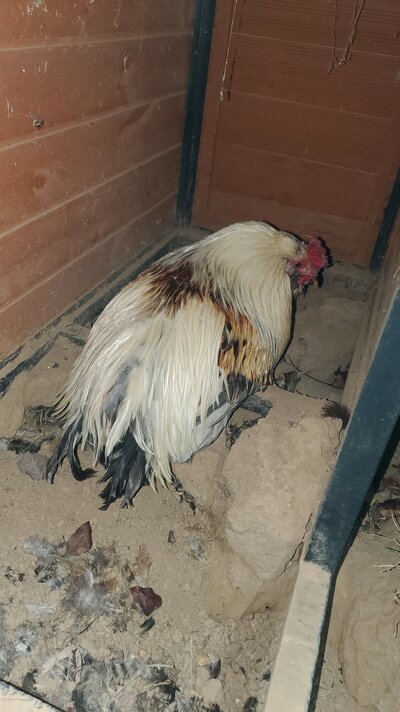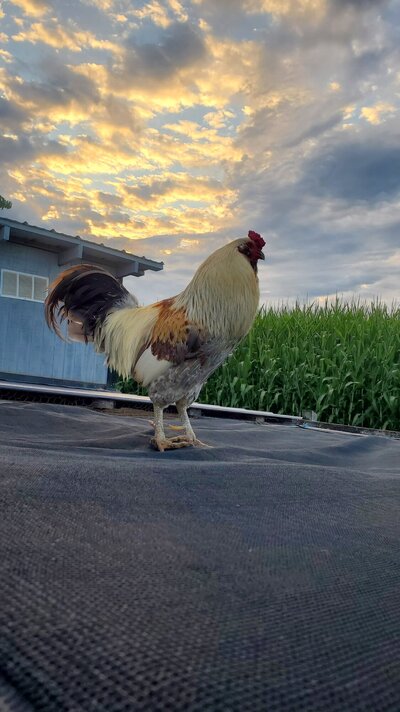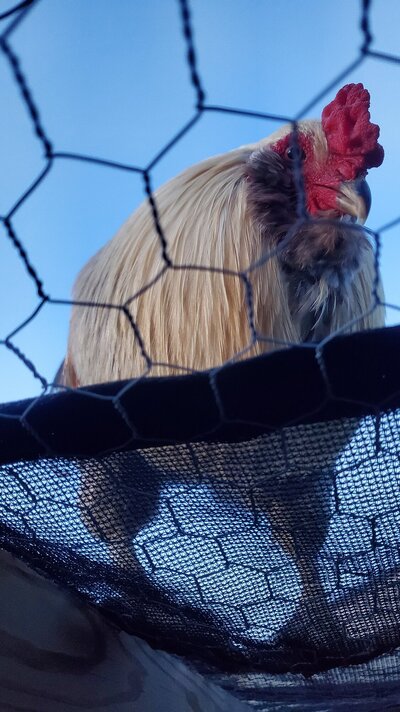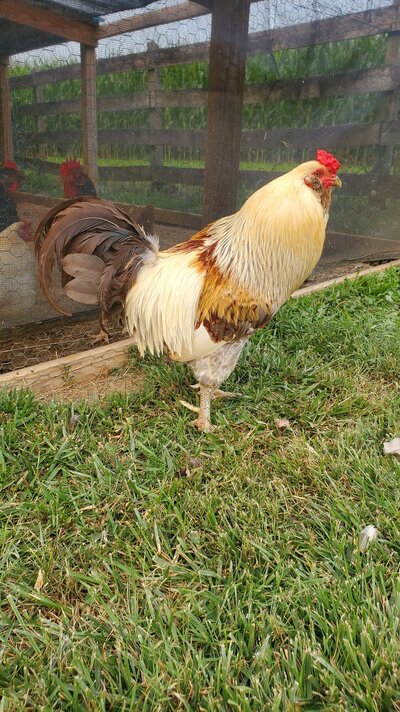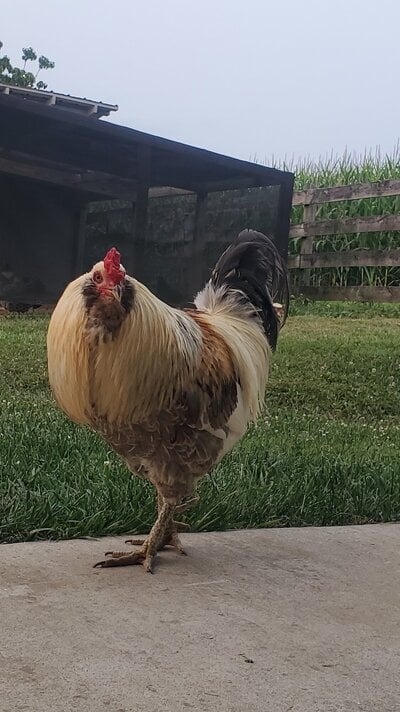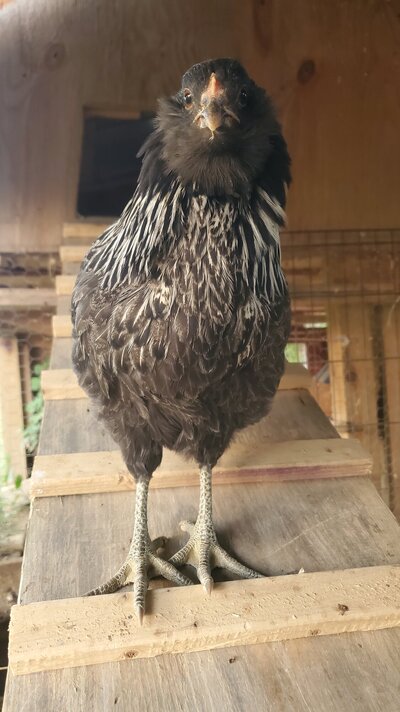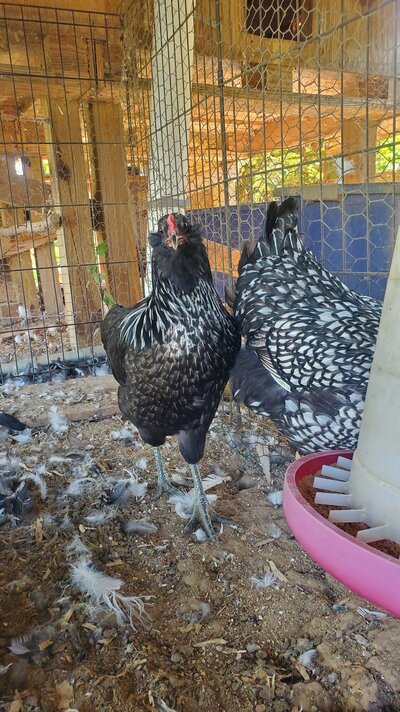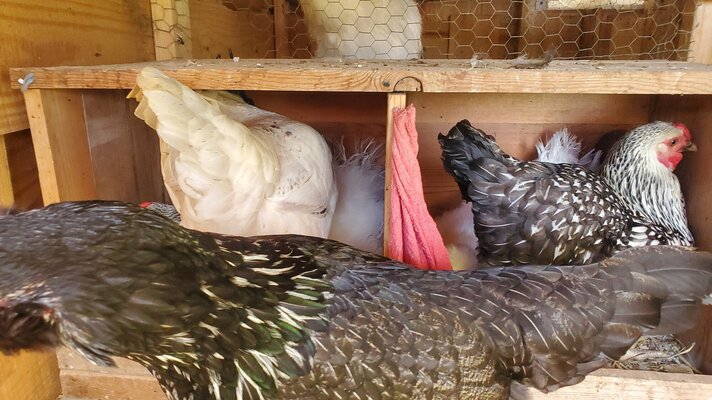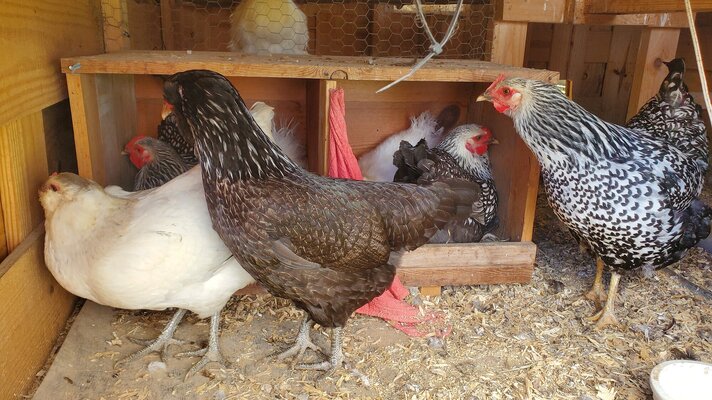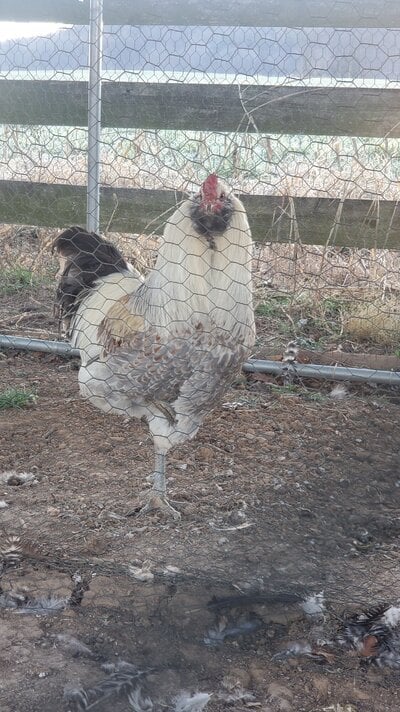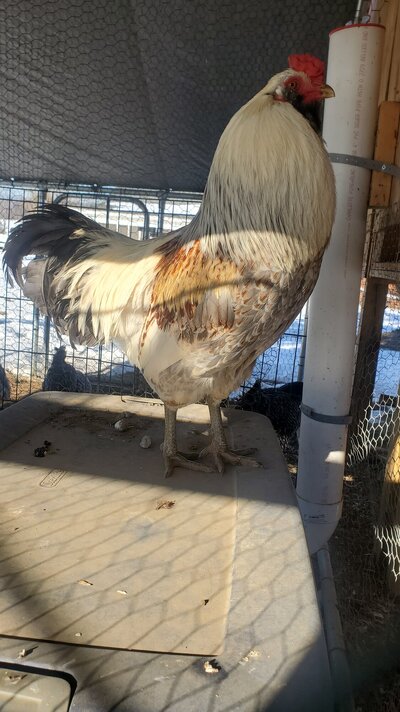Ok, first read through completed and
Here's what I know of Chonkers genetics, the rooster was a chocolate frizzle silkie, he must be true sexlinked chocolate because none of the hens he was in with were chocolate, yet I purchased 3 chocolate pullets from the breeder from the same pen I got the hatching eggs from. There was a satin paint in the pen with the chocolate rooster who must be the hen Chonkers came from. I have no idea beyond that what they may have had going on genetically.
Here are two more views of Chonkers
View attachment 3730619
View attachment 3730620
Testcrossing as mentioned before will probably confirm this, but he's pretty textbook leaky paint. I dug up one of the breeders I'd found talking about this on Facebook to confirm what I'd remembered. From their experience, the gold gene tends to give the birds more paint flecks, but also tends to give them this dirty/dingy look along with that, especially the males. That tracks from what I'd said before about the 'dirty' appearance being from essentially a fine mist of black pigment leaking throughout the feathering. If gold lets more black flecks leak through, then it makes sense that it's more likely to cause this.
My old man, Reuben, I think is S/s+ based on the offspring he had and their offspring, but I never 100% confirmed that through breeding. However, he is confirmed paint through breeding. You can see on him the same general dingy-white color and that it gets a bit paler in the tail, feet, and base of the crest than the rest of the body. He doesn't have as much of that color as OP's bird, possibly because of being S/s+, though unconfirmed. This is how this kind of leakage tends to show up, however. (He also has a little bit of a yellowish patch on his back and side right now from being poo'd on, so don't mind that
This is another male (not mine) confirmed paint through breeding who shows it better; darkest in the hackles and back, dingy in the chest and wings, paler in the tail, feet, and crest:
This dingy leakage is pretty well established as a thing that happens in breeding Paint Silkies. A lot refer to it as 'champagne' leakage if that helps with searching for more about it, but bear in mind it's not the same thing as the 'champagne-blond' dominant gold dilution gene.
And here is another cockerel from the same pen, black frizzle with a funky comb @pipdzipdnreadytogo I would love to hear your thoughts on his comb genetics.
View attachment 3730625View attachment 3730626
View attachment 3730622
That does not look familiar to me in my crossings with walnut combs, if I'm being honest. Hwever, I do know that there are genes that smooth combs out or add bumps, hence why for example both Wyandottes and Redcaps both have rose combs R/? (rose being dominant, they could be either R/R or R/r+ with the same effect), but they are vastly different in appearance. So to me, he does look like P/P and R/? as he should have, just with something else modifying the base shape. Sorry that I don't have any definite answers for you on that, though!






